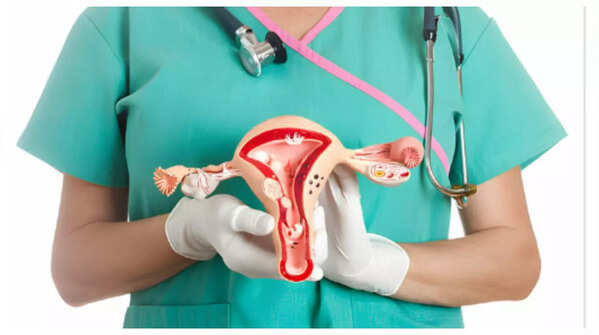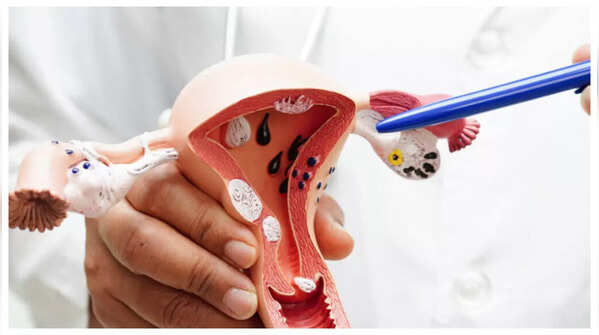Cervical cancer, a malignancy originating in the cervix, the lower part of the uterus connecting to the vagina, is primarily triggered by persistent infection with specific strains of the human papillomavirus (HPV), a prevalent sexually transmitted infection. Although most HPV infections resolve naturally, enduring infections from high-risk HPV types can progress to cervical cancer. As with all cancers, early detection of cervical cancer significantly improves treatment outcomes. However, its gradual progression can cause subtle signs and symptoms that are easily overlooked. Here are five early indicators of cervical cancer that may go unnoticed:

One of the earliest warning signs of cervical cancer is unusual vaginal bleeding, which can manifest as:
Many women experience irregular bleeding due to various factors, often attributing it to hormonal fluctuations or infections. However, it's crucial to seek medical evaluation for any bleeding that deviates from your typical pattern, even if cancer is not suspected.

While a small amount of vaginal discharge is normal, especially around ovulation, changes in its characteristics should raise concern. Typically, vaginal discharge varies in amount and texture throughout the menstrual cycle. Cervical cancer can cause discharge that is:
This discharge may occur between periods or after menopause. While easily dismissed as an infection or irritation, it is essential to seek medical advice.

Pain or discomfort during sex can stem from various conditions, including infections or hormonal shifts. However, it can also signal early cervical cancer. This pain might present as:
Due to its sensitive nature, many women hesitate to discuss this symptom. However, persistent pain during intercourse is abnormal and warrants evaluation by a healthcare professional to rule out serious underlying causes, including cervical cancer.

Mild pain in the lower back or pelvic region is often attributed to common issues like muscle strain or menstrual cramps. However, persistent or unexplained pain in these areas, especially when accompanied by abnormal bleeding or discharge, can be an early indicator of cervical cancer.
This pain is often described as a dull ache or pressure between the hip bones or in the lower abdomen. Its commonality often leads to overlooking it or attributing it to less serious causes. It’s important to seek medical advice for pelvic or lower back pain that does not improve with home remedies.

Early cervical cancer can impact adjacent tissues, including the bladder and urinary tract, leading to symptoms such as:
These symptoms are often mistaken for urinary tract infections (UTIs), which are common among women. However, persistent urinary symptoms despite treatment should be thoroughly evaluated to rule out cervical cancer.

Awareness and regular health checkups are crucial for early detection. The HPV vaccine offers protection against HPV types responsible for cervical, vaginal, vulvar, penile, anal, and oropharyngeal cancers, as well as genital warts. Women can receive the vaccine as early as 11 or 12 years old, up to age 45 (consult your doctor).
Newer articles
Older articles
 Samsung Galaxy A35 5G and A55 5G: Full Pricing and Specs Revealed
Samsung Galaxy A35 5G and A55 5G: Full Pricing and Specs Revealed
 Warning Signs: 5 Clues Your Body May Be Signaling Prediabetes
Warning Signs: 5 Clues Your Body May Be Signaling Prediabetes
 Expert Tips to Help Kids Sharpen Focus and Combat Distractions
Expert Tips to Help Kids Sharpen Focus and Combat Distractions
 SA20 Teams Allowed Up to Six Player Retentions, Enhanced by New RTM Card and Increased Salary Cap for Upcoming Auction
SA20 Teams Allowed Up to Six Player Retentions, Enhanced by New RTM Card and Increased Salary Cap for Upcoming Auction
 Brain's Eye View: Study Shows We See the World 15 Seconds in the Past
OR
The 15-Second Delay: How Your Brain Creates a Seamless, But Delayed, Reality
Brain's Eye View: Study Shows We See the World 15 Seconds in the Past
OR
The 15-Second Delay: How Your Brain Creates a Seamless, But Delayed, Reality
 Cervical Cancer: Don't Ignore These 5 Subtle Warning Signs
Cervical Cancer: Don't Ignore These 5 Subtle Warning Signs
 Science-Backed: 5 Simple Daily Habits for a Healthier Heart
Science-Backed: 5 Simple Daily Habits for a Healthier Heart
 Shimron Hetmyer's Last-Gasp Six Stuns MI New York, Orcas Complete Record MLC Chase
Shimron Hetmyer's Last-Gasp Six Stuns MI New York, Orcas Complete Record MLC Chase
 Oral Cancer: Spotting the Signs, Understanding the Risks, and Why Early Detection is Critical
Oral Cancer: Spotting the Signs, Understanding the Risks, and Why Early Detection is Critical
 Infrequent Bowel Movements: When Is It Time to Worry? A Guide to Healthy Digestion
Infrequent Bowel Movements: When Is It Time to Worry? A Guide to Healthy Digestion